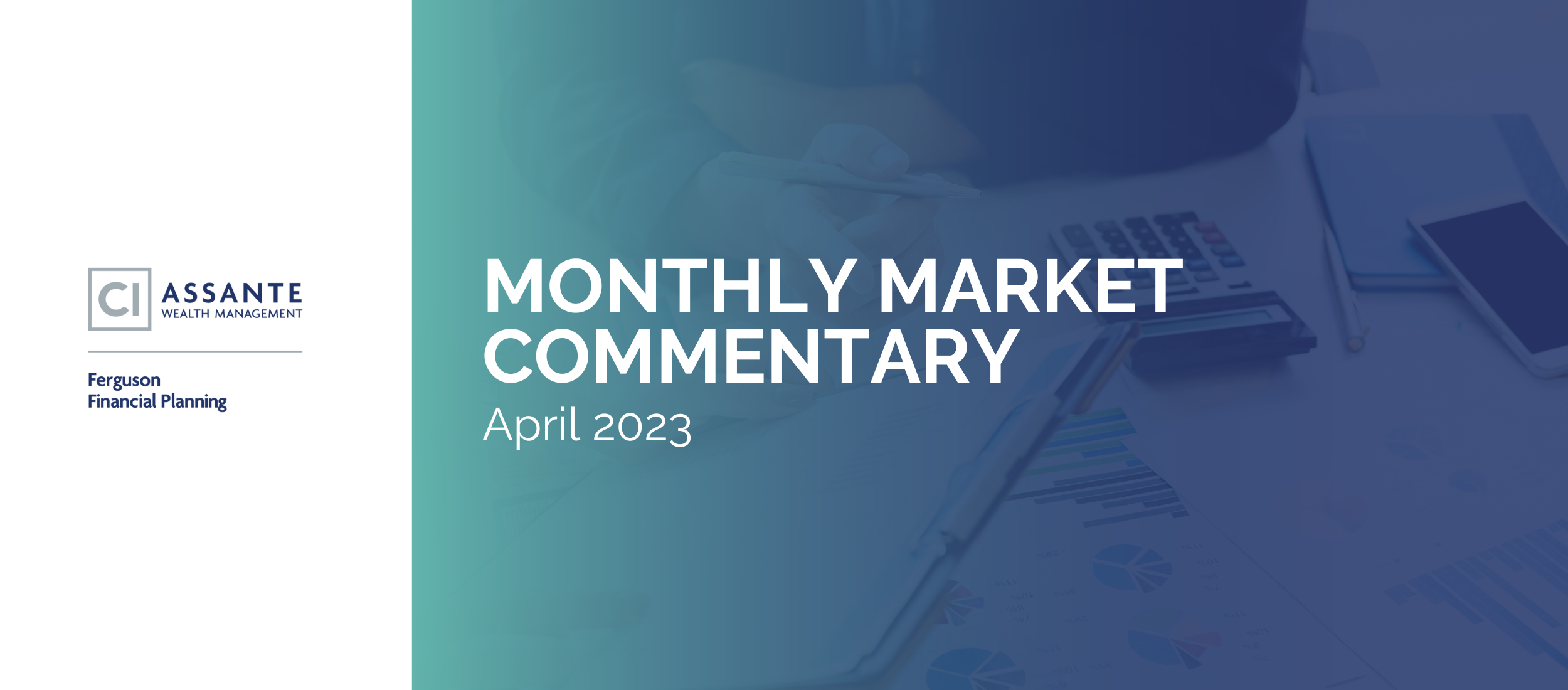April 2023 Market Commentary

It was “all’s well that ends well” for investors in March as following a swift response from central banks to a mid-month scare involving banking stocks, markets rallied and continued their good start to 2023.
Read the March 2023 Market Commentary here.
Here’s a summary of the main events that steered the markets:
Monthly market developments
- Equity markets initially declined after U.S. regional banks Silicon Valley Bank and Signature Bank were shut down mid-month, but recovered to end March and Q1 strongly, with tech leading the way.
- In bond markets, prices rose and yields fell as investors lowered their expectations for how high the Fed would raise interest rates as a result of the closures of Silicon Valley Bank and Signature Bank.
- The U.S. banking fallout spread abroad, affecting Credit Suisse. However, central banks maintained market functionality, liquidity and protected deposits in a coordinated manner, calming investors.
- Canadian banks had another round of strong results in March, largely driven by their trading businesses. Most of the banks also shared a cautious tone for the economy in coming quarters.
- There were a number of market-friendly Canadian and U.S. economic indicators. Job creation on both sides of the border continued to be resilient. Canadian retail sales also rose and home sales slowed.
- China’s manufacturing activity moved back into expansionary territory which global markets responded to positively. The Chinese government also set an annual growth target of 5% for 2023.
- The Canadian government released its 2023 budget which included health and dental care spending, green initiatives, a grocery tax rebate and increases to the alternative minimum tax rate and threshold.
- U.S. inflation eased slightly to 6% but was still higher than hoped due to rising housing and food costs. However, the underlying details remain consistent with trending disinflation. The Fed raised its target rate by another 25 basis points to 5%. Fed chair Powell stressed the Fed would be prepared to increase rates further if tighter financial conditions do not effectively slow down economic activity.
- Canadian inflation slowed from 5.9% to 5.2%, the largest deceleration since April 2020. According to Statistics Canada this was mainly due to falling energy prices although grocery costs remained elevated. As expected, the Bank of Canada held its target interest rate at 4.5%. In its statement, the bank reiterated it would continue to assess economic developments and would hike again if needed.
How does this affect my investments?
Thanks to a swift response from central banks the recent banking troubles have likely been contained. The probability of a global economic slowdown has risen due to tightening credit conditions, which should lead to decreased spending and lower prices. The rate increases over the last year have a delayed impact so are still gradually impacting the economy and monetary policy decisions. The likelihood of interest rates moving lower by the end of 2023 is increasing, potentially setting the stage for the next bull market.
Regardless of where we are in the market cycle, it’s important to take a disciplined approach to investing and stay focused on your long-term goals. This strategy helps you keep your emotions out of investing, typically buying high and selling low like many investors do. Ongoing monitoring and reviewing of your portfolio also ensures it remains on track. Diversifying investments reduces risk as well.
We can help
We are here to help you meet your investment goals and we welcome your questions. We work with business professionals, executives, and families to grow and protect their wealth using our Wealth Plan formula. To discuss our approach and if it is the right fit for you, we invite you to schedule a no-obligation discovery consultation.
IMPORTANT DISCLAIMERS
Assante Capital Management Ltd. is a member of the Canadian Investor Protection Fund and the Investment Industry Regulatory Organization of Canada. The information in this letter is derived from various sources, including CI Global Asset Management, Statistics Canada, Bank of Canada, Bloomberg, U.S. Bureau of Labor Statistics Reuters, National Post, Global and Mail, Investment Executive, Advisor.ca, Wall Street Journal, Toronto Sun, LinkedIn, MarketWatch, Investing.com, and Barron’s as at various dates. This material is provided for general information and is subject to change without notice. Every effort has been made to compile this material from reliable sources and reasonable steps have been taken to ensure their accuracy. Market conditions may change which may impact the information contained in this document. Before acting on any of the above, please contact me for individual financial advice based on your personal circumstances.

